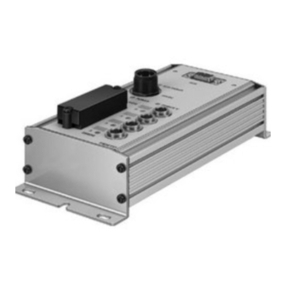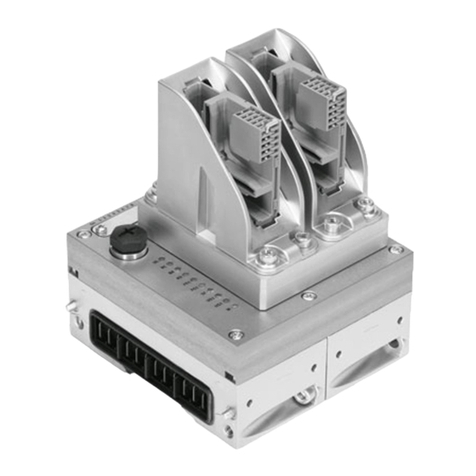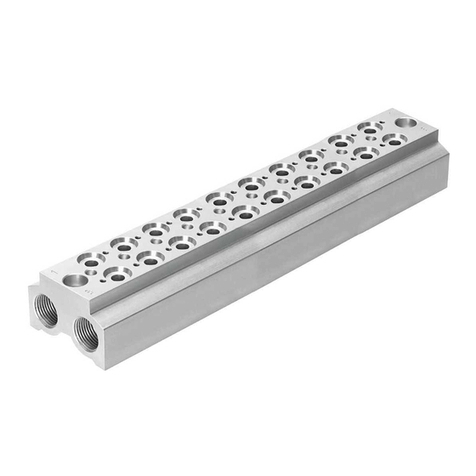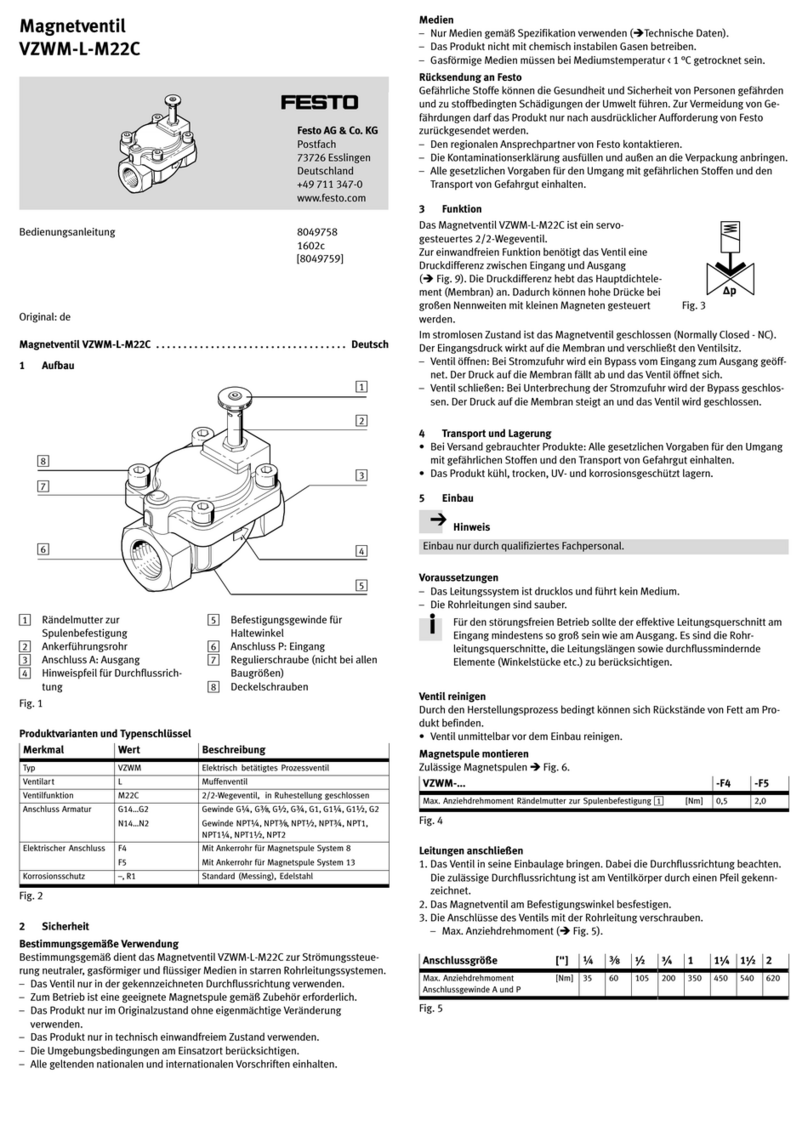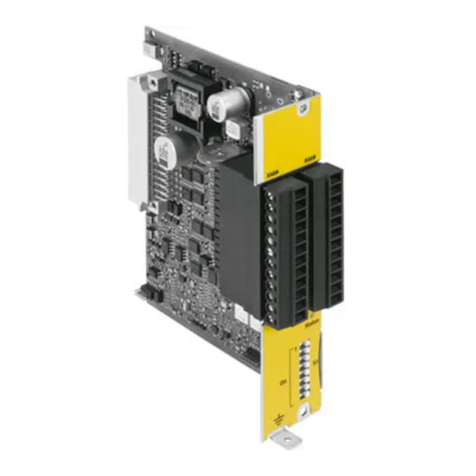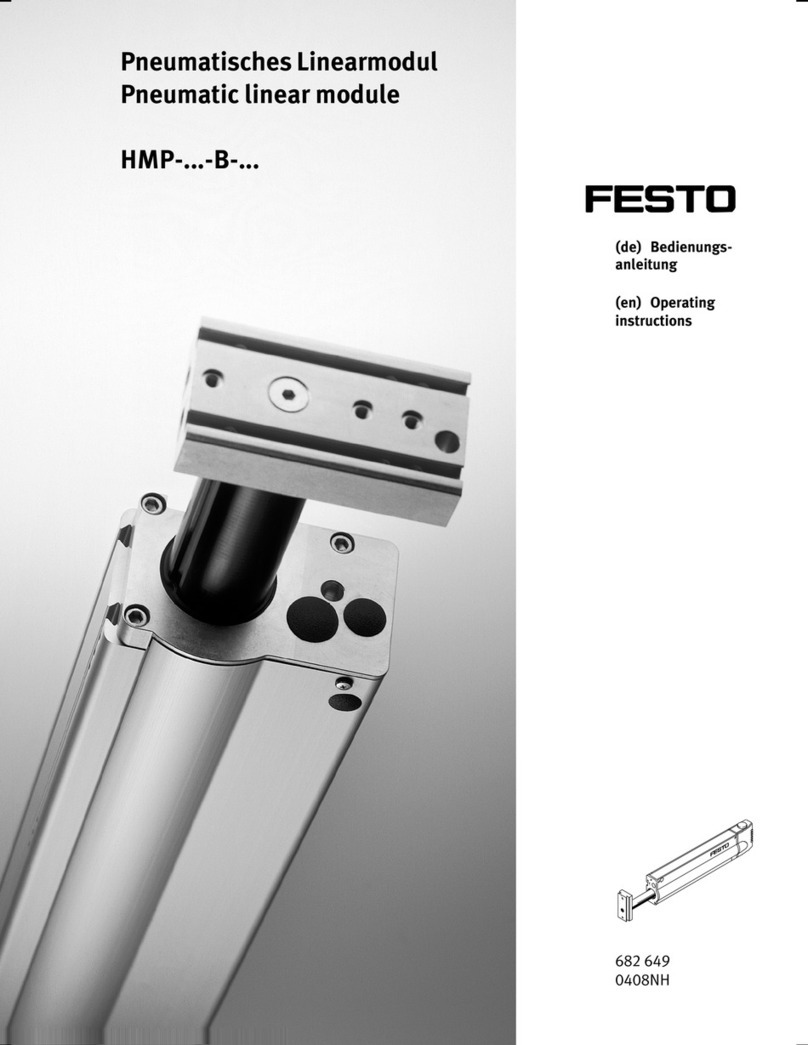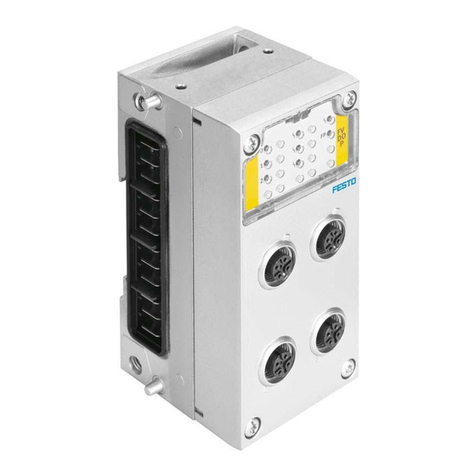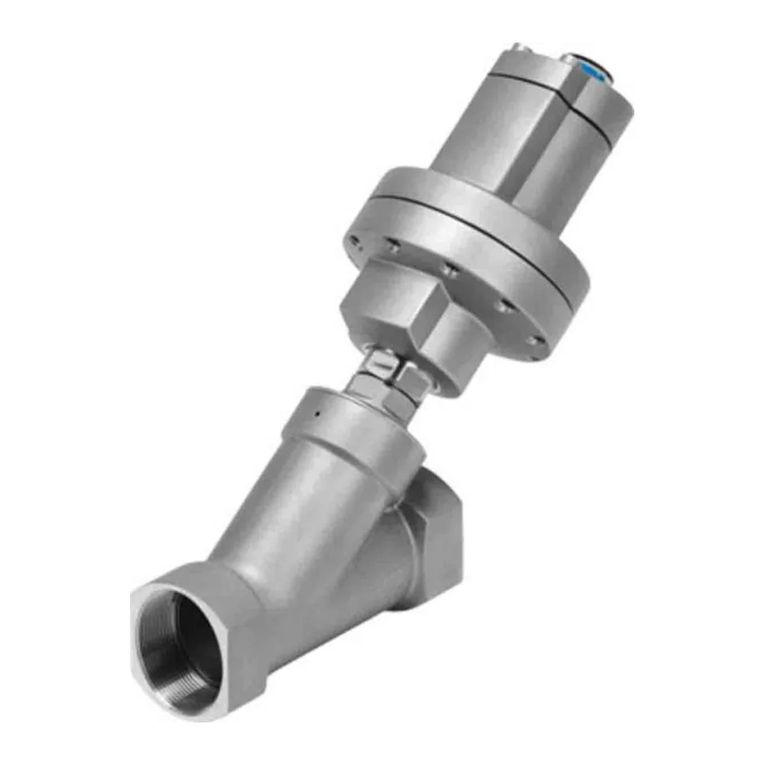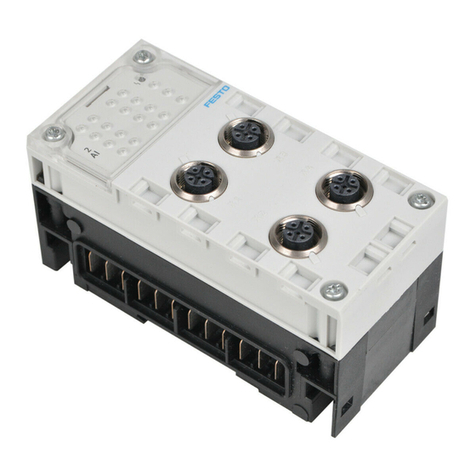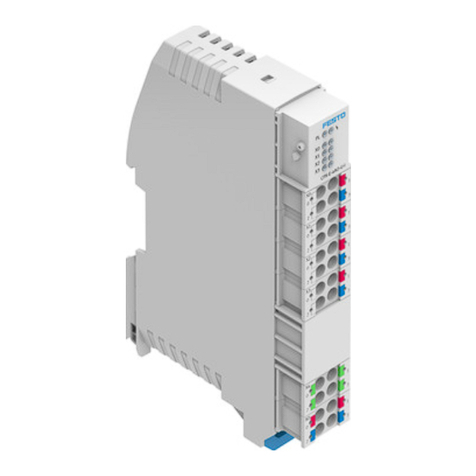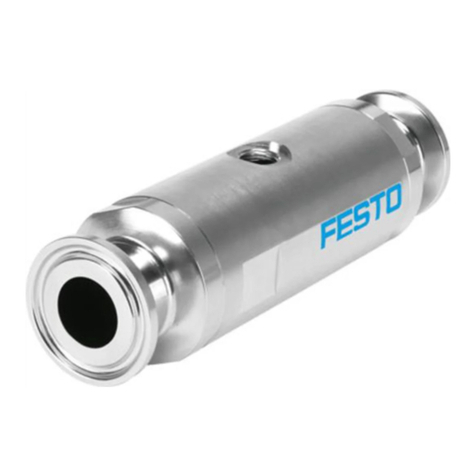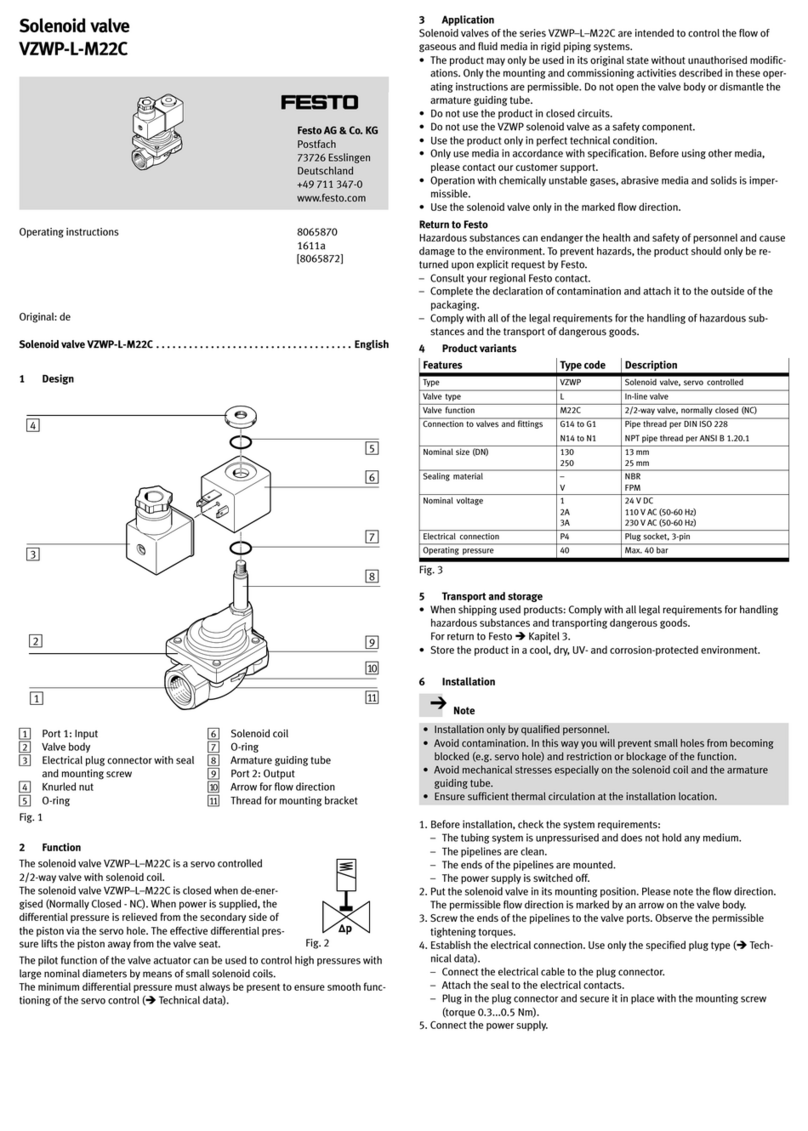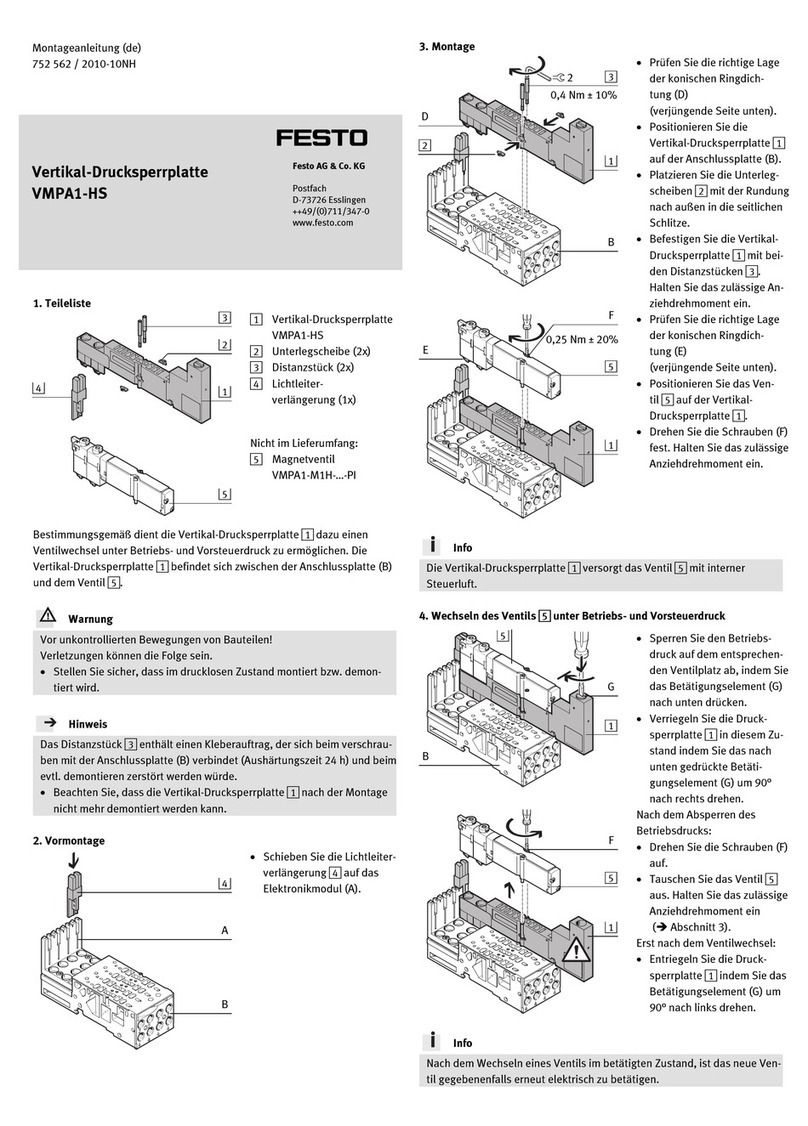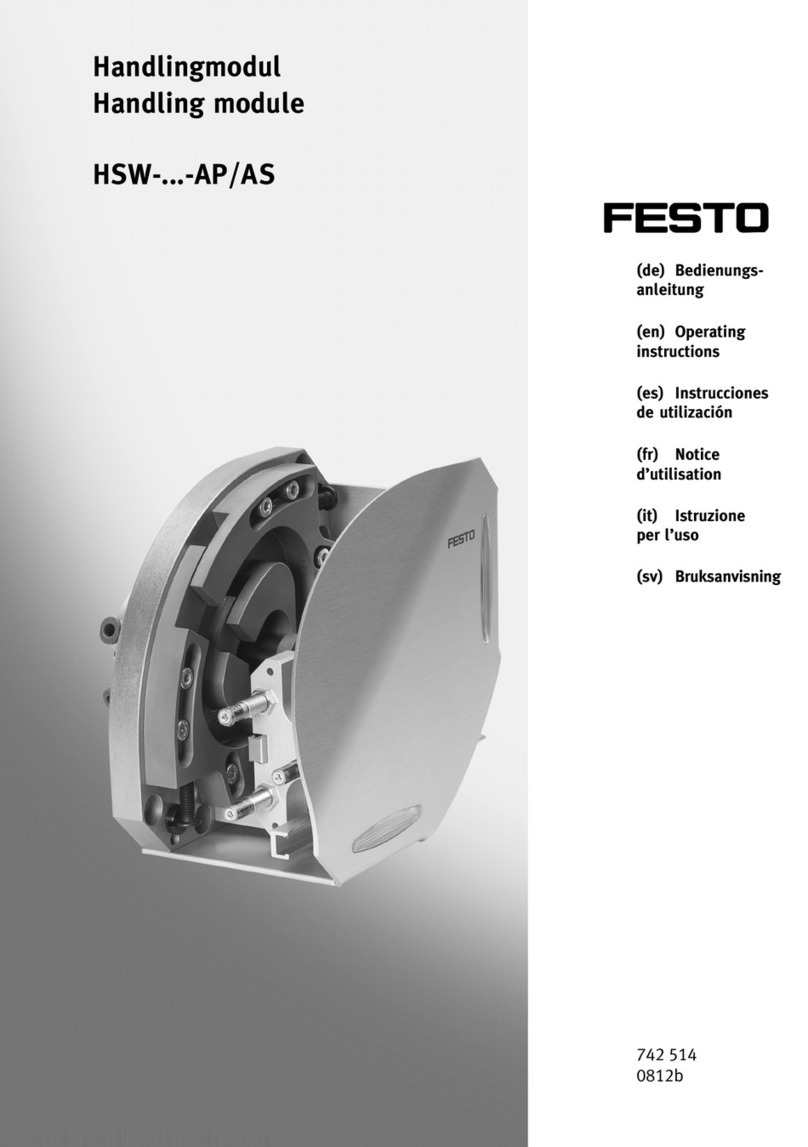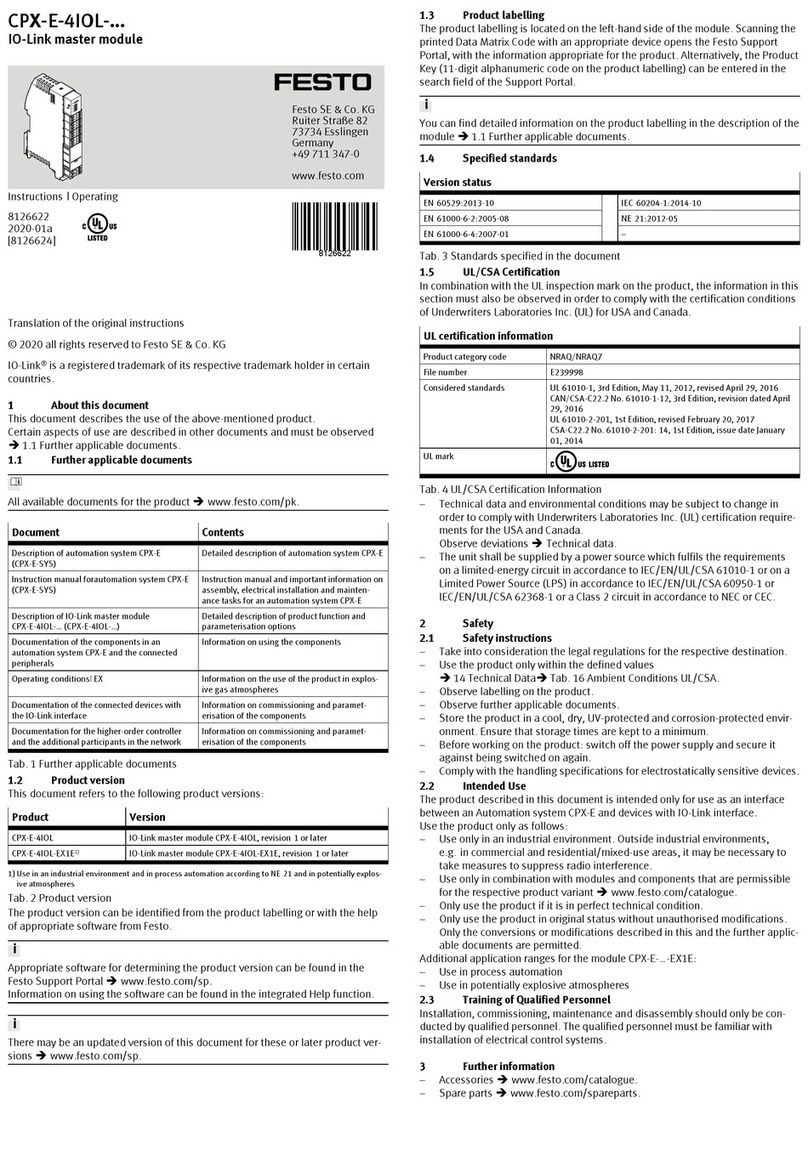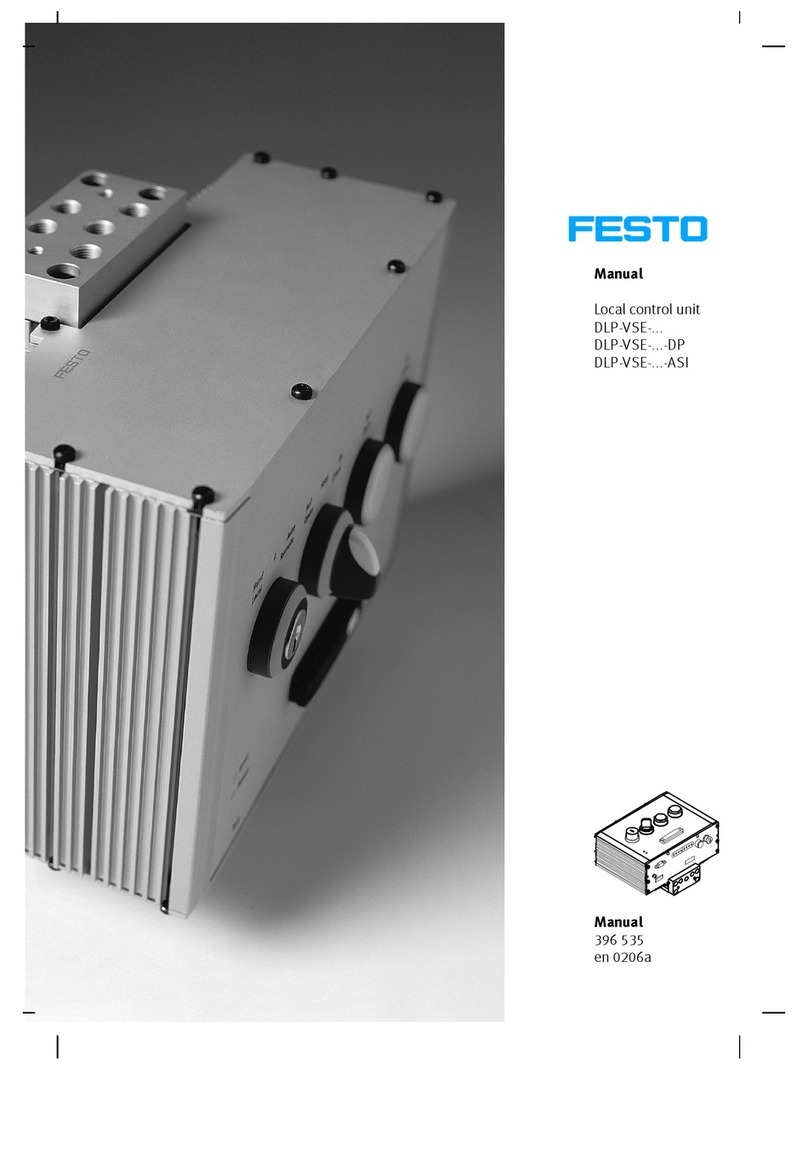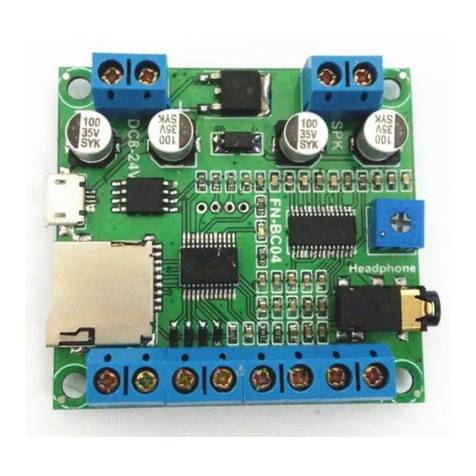6.2 Pneumatic installation
1. Remove the covers from the compressed air supply ports.
2. Connect the following pneumatic ports with tubing (èFig. 1):
– compressed air port (1), pos. aJ
– air port (2), pos. 3
3. Mount a silencer to the exhaust port (3), pos. 8or remove the exhaust air with
ducts.
Note
Too much flow resistance of the silencer, with 0 V/4 mA setpoint specification,
leads to leakage at the connection (2).
Use silencer with low flow resistance.
Recommendation: silencer U-3/8-B from Festo
Operating medium
Note
Lubricated compressed air results in malfunctions and damage to the flow con
trol valve.
Operate the flow control valve with unlubricated compressed air only.
Observe requirements for compressed air quality (èSection 12,
Technical data).
6.3 Electrical installation
Warning
Electric voltage
Injury caused by electric shock, damage to machine and system
For the electrical power supply, use only PELV circuits in accordance with
IEC 60204-1/EN 60204-1.
Use only voltage sources that ensure a reliable electric separation from the
mains network in accordance with IEC 60204-1/EN 60204-1.
Observe the requirements of IEC 60204-1/EN 60204-1 for PELV circuits.
Note
Long signal lines reduce interference immunity.
Signal lines must be shorter than 10 m.
Note
The service interface, plug connector M12, 5-pin (èFig. 1, pos. 2) is exclus
ively for the Festo service staff.
Leave service interface with cover cap sealed.
To guarantee the degree of protection IP65, use pre-assembled connecting
cables from Festo.
1. Mount functional earth with self-tapping screw and toothed disc to the drill hole
pos. 1or pos. 3(èFig. 6).
– The self-tapping screw and toothed disc for earthing cable are included in the
scope of delivery.
1
2
3
2
2
2
1Drill hole for functional earth
(underside valve)
2Threaded holes M5 (10 mm deep)
for mounting of the flow control
valve
3Drill hole for functional earth
(front side valve)
Fig. 6
2. Install electrical connecting cable without squeezing, buckling or stretching.
3. Screw electrical connecting cable onto the M12 plug connector (èFig. 1).
– Tightening torque maximum 0.5 Nm.
Plug connector M12, 8-pin, A-coded
Plug pattern Pin Allocation
1Digital In (Release)
224 V
3Analogue In– (Flow setpoint–)
4Analogue In+ (Flow setpoint+)
5Digital Out 2 (Status optimal operating range)
6Analogue Out (Flow actual value)
70 V
8Digital Out 1 (Error status)
M12 thread Screening
Fig. 7
7 Commissioning
1. Check operating conditions and limit values (èChapter 12, Technical data).
2. Switch on compressed air supply.
3. Check pneumatic connection points for tightness.
4. Connect flow control valve with a setpoint signal (PIN 3 and 4).
5. Switch on operating voltage (PIN 2 and 7).
6. Set “Digital In” (PIN 1) to 1 to switch the valve into the flow control mode.
7. Connect output of the flow actual value through Analog Out (PIN 6 and 7).
7.1 Optimal work range
The flow control valve works in the optimal work range if the “Status” LED is illu
minated green (èFig. 11).
Requirements for optimal work range:
– The valve is neither completely closed nor completely open.
– The pressure difference between input pressure (P1) and output pressure (P2)
is greater than 25 mbar.
– The input pressure (P1) is greater than 2 bar (abs).
– The flow setpoint value is greater than 5 % FS (full scale).
– The flow setpoint value is less than the product of input pressure P1 (abs) and
C value of the valve (255 l/min*bar).
– The difference between flow setpoint value and flow actual value is less than
25 l/min.
7.2 Reaching optimal work range (fault finding)
If the flow control valve does not work in the optimal work range (“Status” LED is
off ), check the following and correct, if necessary:
1. The input pressure (P1) may be a maximum of 6.2 bar (VPCF-6-L-8-G38-6-...) or
10.2 bar (VPCF-6-L-8-G38-10-...).
2. The input pressure at the valve must be at least 2 bar (abs).
Note
To use the complete dynamic response and performance of the flow control
valve, a sufficiently large input pressure must be present. The input pressure
(P1) must always be greater than the quotient of the flow setpoint value and
C value of the valve (255 l/min*bar).
Example: For a flow setpoint value of 1000 l/min, a minimum input pressure (P1)
of 4 bar (abs) is required with flow against the atmosphere.
P1= 1000 l/min = 3.93 bar
255 l/min*bar
3. The flow setpoint value must be at least 5 % FS (full scale).
Possible reasons for too little flow:
– The user section at the output has too much tube length, too little tube diamet
er or constrictions.
– The nozzle at the output has a cross section of the opening that is too small or
an unfavourable, constricting geometry.
– The input section (section between pressure regulator and flow control valve)
has a tube length that is too large, a tube cross section that is too small, or
constrictions.
An input menu for calculating flow and pressure loss with specified tube
length/tube diameter can be found on the Festo Website.
èwww.festo.com/conversion è“Flow calculation” selection field
